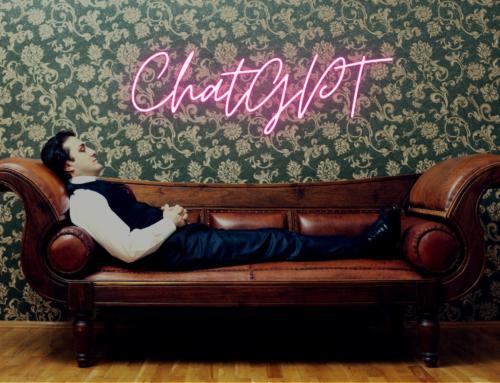“If you are committed to transforming your team or your organization, hiring better is the single best way to do it.” — Laszlo Bock, Work RULES!
You and I are unique individuals. We are each an elegant combination of a double helix of DNA, environment, personal principles, experience, and passions. Perhaps we have some things in common. Perhaps we do not. However, there is no doubt that we each possess traits that make us uniquely suited to any number of business and personal endeavors.
Companies are much the same way. They are a unique combination of people that make them legendary; or not.
When my co-founders and I started each of our companies, one of the first things we focused on was our ideal DNA. It served us well. Both ventures had some of the best people in every position. It proved the key to our success. We accomplished this by focusing on two things. First, we developed a clear set of core values. Second, we developed a talent-acquisition and onboarding process that helped us hire people with the right DNA to help create the company we envisioned. We also continued to “topgrade” the team as we grew and faced new challenges.
I have since spent countless hours reading, speaking with CEOs, founders, investors, and listening to podcasts to gather the latest perspectives on the best ways to create a winning team. Below is a combination of my own experience and common threads from these discussions.
Core Values and Culture
The founding moments of a start-up are like a bunch of stem cells that can take any form. Core values are like the “code” that tells each cell what type of person they are going to create. Another way to think about it is – core values define the experience.
Core values are the initial beliefs that set the foundation of your company. Eventually, you involve the broader team to ensure you have not missed the mark. You might think you could probably get away without writing it down when you are small. However, I would NOT recommend that for a second.
“Many [founders] fall into the trap of just letting culture develop on its own. When that happens, the culture can become scattered, negative, chaotic, and unhealthy,” says Katherine Catlin in her book, Leading at the Speed of Growth.
When we drafted our initial set of core values, we first wrote down everything we hated about our prior employers. We then wrote down every positive experience. Finally, we wrote down what we felt would ensure those elements stuck.
Our early list included things like hiring the best person in every role, customer centricity, innovation, humility, and continuous improvement. Later, when we had grown to employ 100+ people, we expanded it to express our current beliefs.
It included concepts like team excellence, resilience, innovation, integrity, and respect.
“Core values must be based on your own internal beliefs about the right ways to operate to achieve success as a company…” — Katherine Catlin, Leading at the Speed of Growth.
I cannot state enough how critical it is to start with core values. Nothing else matters. Trust me. You will make many hiring mistakes because you will focus on functional expertise or experience and forget about DNA.
The most successful companies focus on DNA.
Key Components of a Scalable Hiring Process
Now that you have your core values set, you need to develop a repeatable, scalable, data-driven way to hire the best possible people you can in every role. In fact, I believe you should hire every role like your life depended on it.
Hiring is the #1 job in any company and represents the most important driver of success. As Jim Collins put it in his book Good to Great, “people are not your most important asset. The RIGHT people are.”
(While this is not the subject of this blog, you should also review the entire team every quarter, or at least every six months, to ensure you have the right person in every seat for your company’s plan of record. The primary reason is the talent you need in every role changes with time as your challenges and focus are not constant. I touch a bit on this in another blog here. I may write a full blog soon on the topic. Stay tuned.)
Below are the components of a winning hiring process:
Develop a Scorecard for Every Candidate
A scorecard is an objective description of a role with specific goals and measurable objectives. It includes the essential competencies for a job and precisely defines the “Gene” of an A-player. This tool is critical! Think of it as the DNA code for each hire.
So many companies fail to develop a clear articulation of what makes the right candidate for a role. I recommend you spend most of your time on this as a hiring manager or CEO. What you are looking for in a hire has to be clear. Review it with your peers to get feedback and reach alignment. For example, do you need a Director of Marketing or a VP of Marketing? What is the difference?
“People are not your most important asset. The RIGHT people are” — Jim Collins, Good to Great.
Scorecards help the candidate, especially an A-player, understand what they are being asked to accomplish. An A-player will feel at home with this information. They are passionate about accomplishing things. It also contains things like the mission of the role, measurable goals outlined for an 18 to 24-month period, and a clear set of core competencies (both functional and cultural).
The scorecard is your tool for determining fit in a disciplined fashion. It is a great tool, especially when you do not have enough experience to pattern match. As GH Smart, in his book Who, puts it, “An A-player is someone who has a 98% chance of achieving the outcomes in the role that only 10% of the possible candidates could accomplish.”
Data-Driven Hiring Process with High Standards
Grab a whiteboard and develop a detailed roadmap of steps a new candidate will follow. What data do you need after each step of the process? What is the exit criteria after each step? Develop a system that reviews and scores each candidate on experience, functional competencies, core values, and cultural fit. Write down (high) standards for what an A-player looks like and stick to it. Never, ever waiver.
(In my first venture, I decided to relax our standards for a bit to help ease some hiring pressure we were experiencing. It was a disaster. I learned my lesson and took all the blame. Never waiver on your standards.)
Develop a Diverse, Cross-Functional Interview Team
Select people from a cross-section of the organization and include every department as much as possible. Successful companies use a mixed interview team to help create a diverse community of employees. Most importantly, the team should have members from the senior leadership team, the candidate’s future department, other departments, and HR. It should include a careful blend of genders as well.
The role of this team is to help perform the candidate review and scoring. Make sure the team meets regularly and comes prepared with detailed notes and data on each candidate.
The team should then determine if the candidate should move onto the next appropriate part of the process, which may be to a decision point. Train this team and hone its skills over time. Remove those who do not contribute or don’t do this passionately and double-down on those who do.

A Standard Set of Candidate Interview and Evaluation Methods
A successful approach to candidate evaluation is repeatable, data-driven, and focus on understanding the candidate’s experience, unique skills, passion, and expertise.
It looks closely at past behavior, relationships, mindset, and a host of other factors. The interview process tests the candidate’s specific skills related to the job, such as presentation, communication or coding. The process is guided by the hiring standards — always.
I suggest you follow a process something like this one:
[1] — Screening Interview (done over the phone or Skype) — Initial filter to ensure candidates have the right passion for the role.[2] Experience Interview (in-person) — Review past job experiences focused on performance relative to the goal, relationship to supervisor and teams. Identify deeper areas to probe, based on detailed accounts of each prior job.[3] Focused Interview (in-person) — Test for specific culture fit, skill set, and behavior. This interview may also revisit areas from step 2.[4] Skills & Communications Test — Make them perform parts of the job via a small project to test their skills. Test their communications skills by requesting a writing sample or asking them to deliver a presentation to your team.[5] Behavioral Diagnostic Test — an objective system used for testing what I call “wiring” for a role. For instance, is this person wired to be a salesperson?
A few points about an interview process:
(1) Get the professionals — recruiters/hr — to do step one.
(2) Have different members of the hiring team pair up to perform steps two to five in the process.
(3) The goal of the process is to find cultural-fit, find the A-player, test their skills and do it in a disciplined fashion.
(4) Design it, so it happens quickly; ideally in 24–48 hours.
(5) It is not about your gut. It is about data.
(6) Take the time to train the interview team on all the steps.
CEO Gets Final Say
Design your process to end with the CEO making the final call. If you are the CEO, review every candidate. In a small company, this should be comparatively simple. At some of the best tech companies, the founding team or CEO personally interview the first 100 people. It is crucial to ensuring quality in the process. My business had over 170 employees at some point, and I (or my co-founders) met with each one before a hiring decision. Nevertheless, the final choice always rested with me as CEO. If I worried about the candidate, I would pass. It is just too crucial not to.
(Laszlo Bock, former VP of People at Google has an entire section in his book, “Work Rules!” on removing power from managers in making the decision. I think he has a point. Read it for yourself and let me know what you think.)
Multi-Part Sourcing Strategy
One of the key steps in developing a scalable hiring process is developing a robust sourcing system. The most important step is making hiring Job #1 in your company. At my companies, everyone was part of the recruiting team. We implemented all sorts of programs to ensure our people helped us find amazing talent.
We offered incentives to help make it all happen. Those incentives included cash, experiences, extra time off and even stock options.
As CEO, you must develop a multi-part sourcing strategy. Part one, you must become an incredible networker. Anytime you meet someone amazing; you stay in touch with them. You share the type of roles you are looking for and ask them for names of the best people they have ever met in any discipline. For instance, I always ask my customers about their best salespeople.
Part two, use social networks like LinkedIn to research potential candidates.
Part three, offer friends of the company (partners, providers) the opportunity to help you find great talent.
Part four, hire professional recruiters (contractors or on staff) to help you develop a pipeline.
Onboarding and Training
Hiring a newbie and having them arrive at their desk is just the beginning. It is now time for you to teach them about your expectations of them.
I taught a training session for all new hires. In this course, I went through our strategic plan for the next three years. I also spent much time describing our culture and values. I explained how we live our values, and how we use them to measure performance.
I told stories about employees who use our values to make the right call in tough situations. I went through customer case studies and shared how our products have helped them. Finally, I encouraged each group of new hires to visit my office or call me anytime about anything.
“Don’t hire the person who can do the job you have open right now; rather, hire people who can grow at least two levels as the company grows and your management structure becomes more sophisticated…” –Anonymous
We also implemented a buddy system, to help new team members get up to speed quickly. We usually paired them with someone from another department to encourage cross-functional collaboration. The collaboration was an essential part of our culture, so this was a perfect way to sow the seeds.
We introduced all the newbies during our quarterly all-hands meetings. We designed fun ways to get to know them, and we offered up ways for team members to connect with the newbies. The most famous became the “nickname” question.
“Do you have a nickname?” I would ask. God help them if they did not. The whole company would collaborate on defining one.
The point is, think through how you will help new hires join the community, become productive and live the core values.
Probation, Checkpoint Monthly After Hire
No hiring process is foolproof. Hiring mistakes will happen. It is what you do about it that matters. We were religious about correcting mistakes swiftly or when a customer raised a concern about people.
We accomplished this through monthly check-ins. We evaluated each newbie against their scorecard regularly. Usually monthly. We looked for signs of poor cultural fit and performance. Every employee was on a six-month probationary period. Nevertheless, if we noticed a poor fit sooner, we would make a change quickly.
I recommend monthly checkpoints in close coordination with managers. When it is evident you have the wrong person, move swiftly.

Define and Measure Experience
What should the experience be like from the candidate’s perspective? The experience should be representative of your core values. As soon as a candidate has the first interaction with your organization, they should feel the culture, the mission.
Spare no details. Manage the speed of the process, the order of steps, and introduce each new person to ensure the best possible experience.
When you make an offer, they should already be sold on the company and feel connected to it. If they do not work out, you want them to be an ambassador in the community for your business.
“That is a marvelous place, I wish it worked out,“ they should say to anyone who asks.
Perform surveys of each candidate to help find ways to improve the process.
Selling
Start selling the candidate starting with their first interaction with the company. Sell them until hired and continue selling them after.
So many companies get this wrong and lose a candidate at the last minute. The interview process should be designed to uncover what each candidate genuinely cares about, what motivates them, and their passions.
Once you know this, focus on crafting the experience and the job to play to these desires. Connect them with the right people and personally get involved in selling them on the role and the company.
(You can find some great ideas on how to create an amazing candidate experience using design thinking, here.)
Anti-Bias Technology
As I mentioned above, the most successful companies are diverse and think deeply about gender, diversity, and inclusion. There is now a host of technology to help you avoid some of the common pitfalls associated with bias. For instance, Aleria helps you plan, execute, and measure your diversity and inclusion programs to ensure your company “emerges” as a diverse organization. We did not use anti-bias technology in my companies because they did not exist at the time. These days, it is increasingly important to do so. You can find more examples on this list.
Summary
Any successful CEO will tell you there are three keys to an A-level company: The right strategy in the right market, at the right time; An A-player team that fits with their culture; and financial discipline.
Hand-picking the right people is not easy. Having a playbook helps.
Before making your first hire, take the time to draft your values and build the process that will work best for you. Without it, who knows what kind of company you are creating? Be patient and be disciplined. A hiring process should not feel like voodoo. It is all about DNA.
(Anything missing from the list? Share your thoughts in the comments below.)



